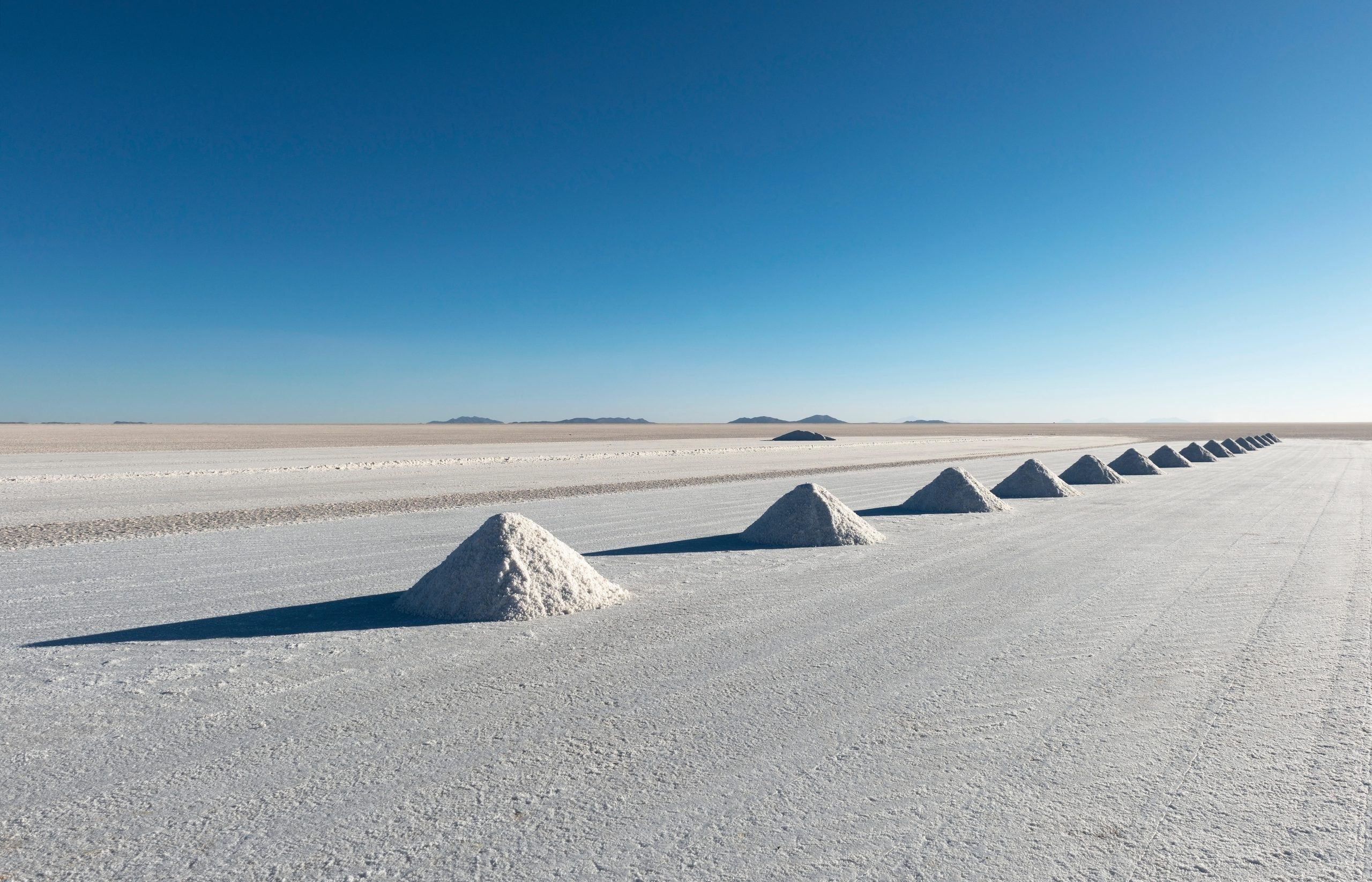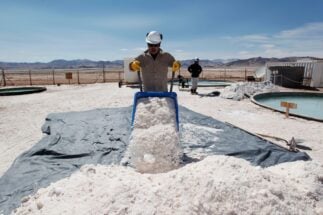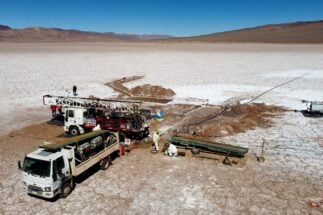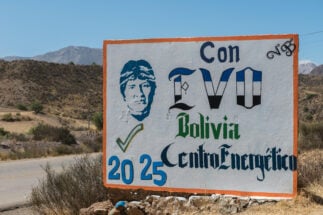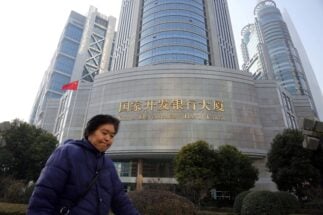In order to limit global temperature rises, the world will have to undergo an urgent energy transition that will leave the fossil fuel era behind. Yet, the technologies that support this, such as solar and wind power, or electric cars, require the extraction of large quantities of the various minerals used in their production. An electric vehicle, for example, requires six times more mineral resources than a conventional one, while an onshore wind power plant requires nine times more mineral input than a gas facility.
As the world advances in climate-friendly energy, demand for certain minerals that are found in the subsoil throughout Latin America will increase, begging the question: are there enough resources to meet the needs of a new energy era? What negative impacts will extraction cause for the environment, and how can we mitigate them? This is what we know so far.
What minerals are required for the transition and how are they used?
While lithium and rare earth elements have attracted newfound attention for their transformative potential for energy storage, traditionally mined metals such as copper, nickel, manganese, graphite, and zinc also have an important role to play – and their demand will also increase. These metals and minerals are key components in electric vehicles (EVs), wind turbines and other emissions-free energy sources that mitigate global temperature rises.
All new energy technologies use these minerals in different proportions, but EV batteries are the most demanding, particularly for lithium, which enables strong battery performance and longevity.
Demand for lithium is estimated to increase 40-fold by 2040. Demand for graphite, cobalt and nickel is expected to grow by between 20 and 25 times. Charging networks for EVs consist of numerous cables that require a large amount of copper, demand for which is expected to double over the same period. In 2021, demand for copper from Chile, the world’s largest producer, already increased by around 80% compared to the previous year, according to BBC Mundo.
Wind turbine towers and drivetrains are made of steel, zinc and aluminium and account for about 80% of the total weight. Some turbine designs use direct-drive magnetics, which contain the rare earth metals neodymium and dysprosium. It is estimated that about 20% of all installed wind turbines use rare earth magnets. Wind turbines also contain copper in the generators, and carbon fibre and fibreglass in the blades, not to mention the concrete used to construct the towers.
Solar energy requires storage units both in the form of individual batteries for private use and on a large scale in power grids. This requires the various minerals used in lithium-ion batteries, which include cobalt, lithium, manganese, nickel and graphite.
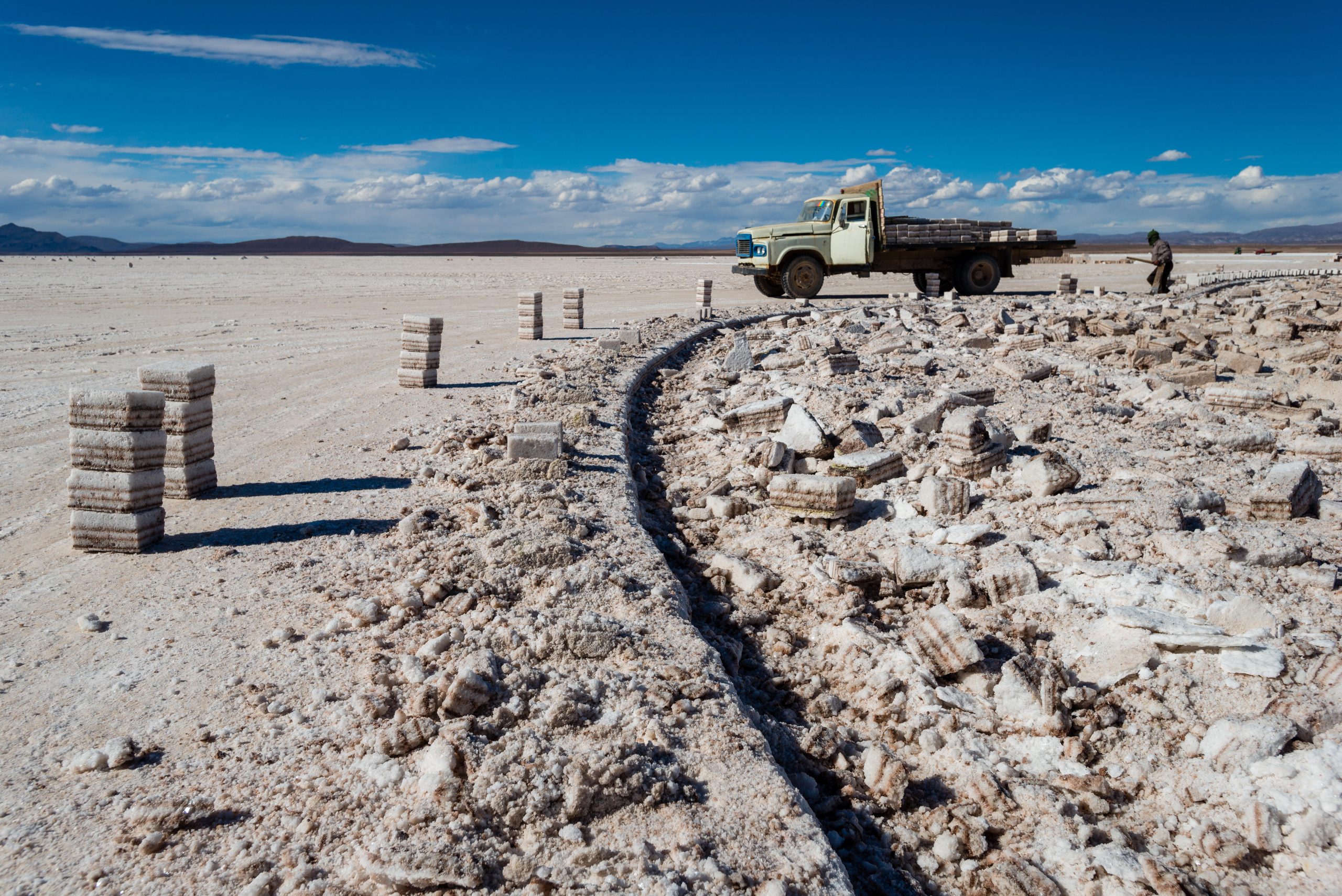
Batteries consist of two electrodes, or electrical conductors, called a cathode and an anode, and an electrolyte through which they exchange ions, delivering a charge or discharge. Different minerals can serve these purposes. Lithium’s high electrochemical potential makes it a valuable component of high energy-density rechargeable lithium-ion batteries.
Most lithium-ion batteries use graphite as the anode, which means graphite will be the most sought-after mineral in energy storage. Cathodes vary more widely: most frequently they use nickel, but various mixes of cobalt, lithium, and manganese are also common.
The environmental impact of minerals for the energy transition
Yet, in the shadow of the promise of clean energy lies the threat of unsustainable damage to the environment caused by obtaining and processing the requisite minerals. Every tonne of lithium that is extracted, for example, requires up to 2 million litres of water, depleting groundwater resources. This affects availability for communities, flora and fauna, and operations can affect water quality.
Researchers at Boston University have recommended that the countries of the lithium triangle (Argentina, Chile and Bolivia) strengthen their institutional capacity to generate a more responsible mineral boom in partnership with greater participation by local communities.
Rare earths are a group of 17 light metallic elements that are a key part of the transition, and which we unknowingly interact with every day. Smartphones, tablets and other devices with touch screens depend on them. They are valued materials for the energy transition because they are very good electrical conductors and have magnetic properties that are useful in battery technologies used in electric cars.
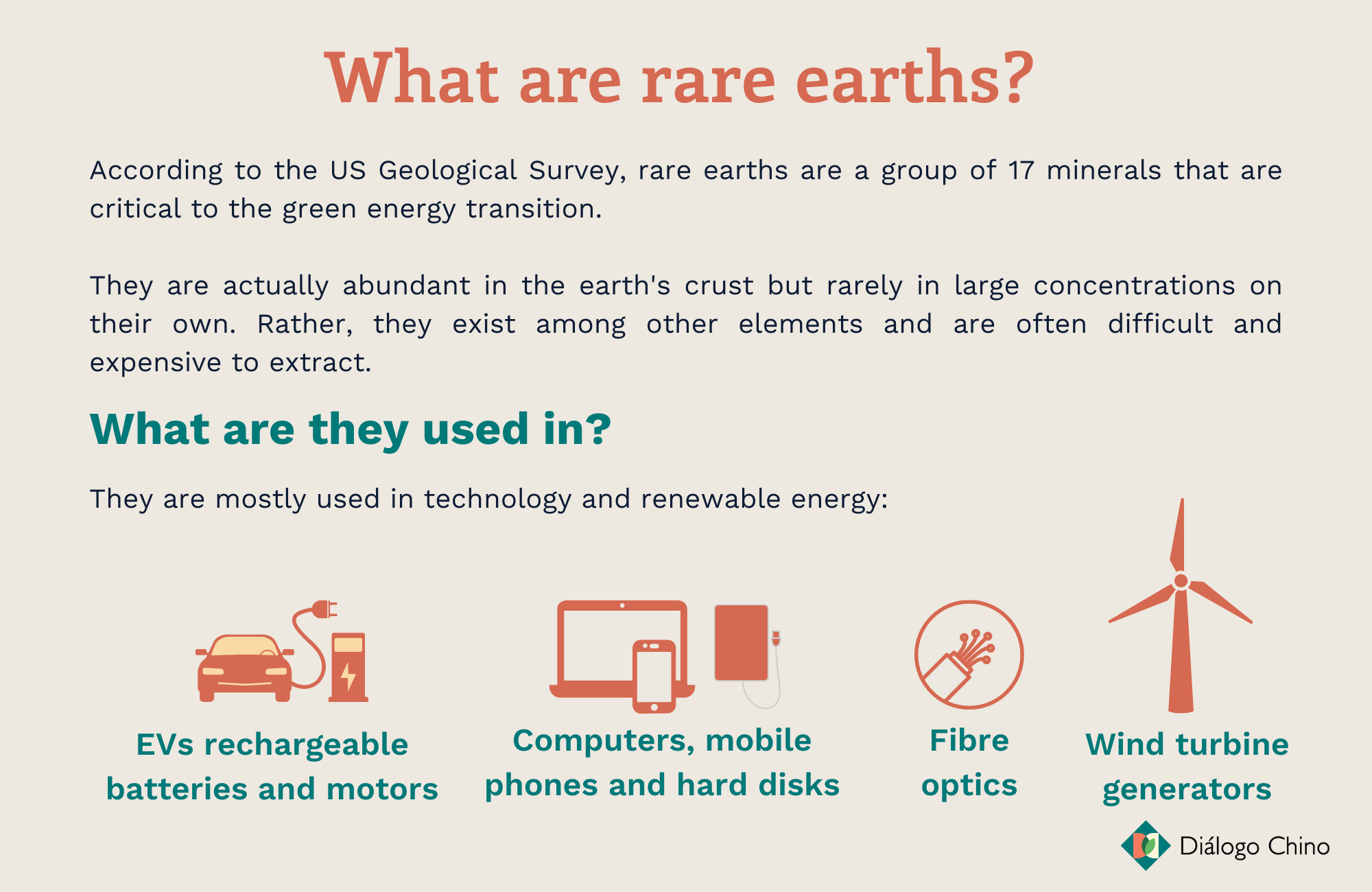
Rare earths – neodymium, scandium and yttrium, to name a few – are especially difficult to extract, since they are embedded in certain other minerals and alloys. And although they are actually abundant, it is very rare to find them in their pure form and they tend to occur in low concentrations. Elisa Fabila, a chemical engineer from the National Autonomous University of Mexico (UNAM), who specialises in the study of metallurgical chemistry, says that the extraction process is complicated and invasive.
“To separate the mineral [from the other compounds] an ionic reaction is needed and the residues of this reaction are what become so polluting,” Fabila says.
“The water that is used can no longer be reused, due to all the toxic and radioactive waste that remains. And although these alternatives [to fossil fuel inputs] do not produce emissions, they are not as clean as we thought,” she adds.
Other non-rare earth minerals essential to the energy transition also have damaging extraction processes. Copper, for example, is extracted by detonating explosives in cracks in the ground in open-pit mines. On average, 300 square metres of soil are lost for each explosion, explains Fabila. All properties of the earth are washed away, as the blasting needs to break down the components of the soil in order to bring out the metals.
China stars in the extraction of rare earth metals. According to data from Statista, in 2021, the country accounts for 60% of global rare earth production. It has in recent years limited its production and export to other parts of the planet, and brought rare earths to the fore in a trade dispute with the USA. The largest of all its mines is at Baiyun Obo in Inner Mongolia, which, according to NASA, is home to almost half of the world’s production of rare earths.
It is estimated that the demand for rare earths may grow by three to seven times by 2040, depending on advances in battery technology and electric turbines.
Scarcity, concentration and quality
As the world requires more minerals, questions have been raised as to whether there are sufficient resources to meet global demand. Several factors will influence this and it will largely depend on the developments in battery chemistry.
According to a report by the International Energy Agency, a mixed scenario is expected in which some minerals, such as lithium raw material and cobalt, are likely to have a short-term surplus, while processed lithium, battery grade nickel and key rare earth elements such as neodymium and dysprosium could experience supply shortfalls in the coming years as it fails to keep pace with demand.
Solutions
IEA experts recommend a series of measures to ensure the future availability of key minerals. Awareness raising on the need to invest in sustainable mining developments in countries with significant reserves is essential. It is also crucial to develop technologies that are more efficient with the use of critical minerals. And instead of relying on them, explore the wider rollout of alternatives that are potentially less damaging for soil and water, such as biomass.

Recycling is also an important factor in relieving pressure on primary supply. Harald Gottsche, President and CEO of the BMW Group’s San Luis Potosí plant in Mexico, told Diálogo Chino that the company wants to reduce its impact on the entire distribution chain.
“Circularity starts from product design, with the use of secondary materials in our value chains, as well as with the recycling of BMW Group vehicles at the end of their life cycle,” Gottsche says. For example, the company plans to reduce the use of cobalt in the cathodes of its current generation of batteries to less than 10% by the end of this decade.
“Our latest generation of electric motors is built without using rare earths,” Gottsche says. Other big companies like Samsung and Tesla are choosing to ditch cobalt batteries.
Renewable energies are essential to keep dangerous global temperature rises at bay. Otherwise, according to the latest report by the Intergovernmental Panel on Climate Change on climate mitigation, parts of the planet will be uninhabitable by 2050. The use of alternative fuels, such as hydrogen, that are less dependent on minerals must also significantly increase, according to the UN.
